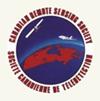利用卫星遥感探测白松针损害
IF 2.1
4区 地球科学
Q3 REMOTE SENSING
引用次数: 3
摘要
摘要新英格兰森林中的东部白松(Pinus strobus L.)最近受到一种名为白松针叶损伤(WPND)的真菌疾病的影响,造成了广泛的针叶损伤。为了补充目前基于实地和空中探测调查的WPND监测方法,我们评估了卫星遥感技术检测WPND疫情的潜力。使用Sentinel-2光谱植被指数(SVI),我们直接可视化了变化重叠的WPND爆发,并运行随机森林机器学习分类器进行特征选择、WPND检测和严重程度分类。通过归一化差分红外指数(NDII)对WPND相关变化的直接可视化最为有效,该指数捕捉到了与WPND峰值症状一致的植被健康状况的下降。我们在二元(WPND与非WPND)检测(70%)和WPND的两类严重性建模(75%)中获得了良好的准确性。使用夏初至夏末的图像获得了最高的精度。用于建模的选择最多的SVI是类胡萝卜素反射指数1(CRI1)、哨兵2红边位置(S2REP)和归一化差异植被指数(NDVI)。我们的研究结果表明,通过精细分辨率遥感检测严重的WPND是可行的。然而,还需要更多的工作来确定遥感数据的空间、光谱和时间分辨率对检测WPND严重程度的影响。本文章由计算机程序翻译,如有差异,请以英文原文为准。
Detecting White Pine Needle Damage through Satellite Remote Sensing
Abstract Eastern white pines (Pinus strobus L.) of New England forests have been recently impacted by a fungal disease known as White Pine Needle Damage (WPND), causing widespread needle damage. To complement current WPND monitoring methods based on field and aerial detection surveys, we evaluated the potential of satellite remote sensing technology to detect WPND outbreaks. Using Sentinel-2 spectral vegetation indices (SVIs), we directly visualized change overlapping WPND outbreaks and ran Random Forest machine learning classifiers for feature selection and WPND detection and severity classification. Direct visualization of WPND associated change was most effective through the Normalized Difference Infrared Index (NDII), which captured decreases in vegetation health conditions coinciding with peak WPND symptoms. We obtained good accuracies in binary (WPND vs. Non-WPND) detection (70%) and two-class severity modeling of WPND (75%). The highest accuracies were achieved using imagery from early to late summer. The most selected SVIs for modeling were the Carotenoid Reflectance Index1 (CRI1), the Sentinel-2 Red-Edge Position (S2REP), and the Normalized Difference Vegetation Index (NDVI). Our results suggest detecting severe WPND through fine resolution remote sensing is feasible. However, more work is needed to determine the effects of spatial, spectral, and temporal resolution of remote sensing data for detecting WPND severity levels.
求助全文
通过发布文献求助,成功后即可免费获取论文全文。
去求助
来源期刊

Canadian Journal of Remote Sensing
REMOTE SENSING-
自引率
3.80%
发文量
40
期刊介绍:
Canadian Journal of Remote Sensing / Journal canadien de télédétection is a publication of the Canadian Aeronautics and Space Institute (CASI) and the official journal of the Canadian Remote Sensing Society (CRSS-SCT).
Canadian Journal of Remote Sensing provides a forum for the publication of scientific research and review articles. The journal publishes topics including sensor and algorithm development, image processing techniques and advances focused on a wide range of remote sensing applications including, but not restricted to; forestry and agriculture, ecology, hydrology and water resources, oceans and ice, geology, urban, atmosphere, and environmental science. Articles can cover local to global scales and can be directly relevant to the Canadian, or equally important, the international community. The international editorial board provides expertise in a wide range of remote sensing theory and applications.
 求助内容:
求助内容: 应助结果提醒方式:
应助结果提醒方式:


